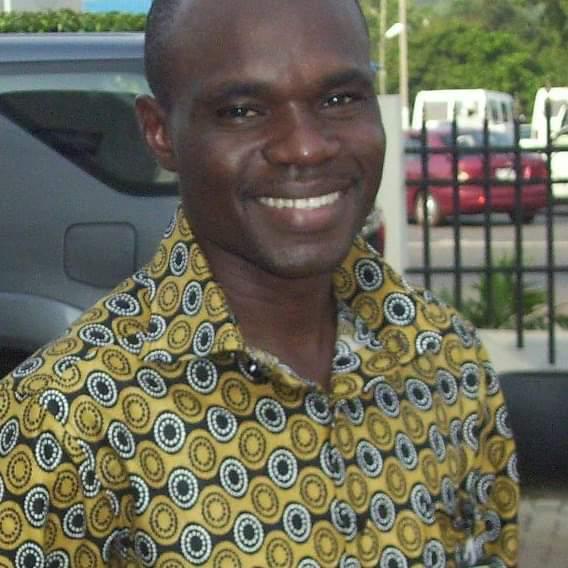Ghana and other middle and low-income countries are arguably among the smallest group of emitters of global carbon dioxide (CO2) emissions.
Nonetheless, the socio-economic and environmental impact of climate change on these countries continues to worsen. A global consensus towards the journey to achieve net zero CO2 emissionsby 2050 is critical.
The just ended 26th United Nations Climate Change Conference of the Parties (COP26) in Glasgow, UK which started from the 31st of October the 12th of November, 2021 among other things brainstormed on ways to meet this critical target.
Some members of faculty from the University of Environment and Sustainable Development, (UESD) have various perspectives on the outcome of the summit in the areas of: Climate Financing, Climate Change Adaptation, Climate Change Mitigation and Climate change education and youth.
Climate Financing
Peter Asare-Nuamah, (Ph.D.)
(School of Sustainable Development, (SSD).

United Nations Framework Convention on Climate Change (UNFCCC) prioritizes climate financing as a means to drive climate change adaptation and mitigation. This explains why climate financing gained a centre stage during the Paris Agreement in 2015. By this Agreement, developed countries were committed to mobilizing $100 billion annually to fund adaptation interventions in vulnerable developing economies. However, this commitment has not been fully fulfilled. It offered a great opportunity for global leaders to negotiate and find a more sustainable means of funding adaptation and mitigation in developing economies. African economies, as represented by the African Group of Negotiators, indicated that the problem with climate financing is not only about the non-fulfilment of the promised $100 billion, but that the amount itself is meagre if the world wants to aggressively address climate change, especially in developing economies. With most of these African economies struggling, countries such as Ghana, Senegal, Ethiopia and Zimbabwe, spend about 7-9% of their Gross Domestic Product (GDP) on climate change adaptation[1]. Intuitively, aggressive financing mechanisms are needed for African economies, which contribute less than 4% to global emission of greenhouse gases but are the most affected by climate change. As such, African economies requested global leaders at COP26 to increase climate financing to about $700 billion annually towards adaptation interventions from 2025[2]. Unfortunately, the demand by African countries for adaptation financing could not be accepted at the end of the negotiations. This is very troubling and problematic for a continent that is hard hit by climate change and climate extremes. Nevertheless, global leaders, particularly those from developed economies, should show strong commitment by honouring their promise of funding adaptation in developing economies, which will be instrumental in championing progressive sustainable development on the continent. It is expected that the usage of adaptation funds would comply with transparency and accountability processes to ensure that funds are not misappropriated.
Climate Change Adaptation
Fatima Eshun (Ph.D.),
School of Natural and Environmental Sciences, (SNES).

As climate change has come to stay, countries have no option but to adapt to its effects. This means that countries have to identify climate risks and take the necessary steps or actions to reduce its impacts[3]. Resources such as human, social, economic, physical and natural are necessary for climate effects adaptation. Thus, climate change affects all manner of persons and requires concerted efforts as no single country, region or community can effectively combat it. It, therefore, needs social connectedness and cohesion to adapt to these effects. Again, economic assets are needed to enhance the assets of countries and communities to adapt to the effects. Resilient physical structures need to be constructed if people have to adapt to climate impacts. Construction of drainages at flood-prone areas, sea defence walls at the coastal areas for example could help residents in such areas to adapt to the effects of floods and tidal waves. The natural resources base of countries and communities that depend on them for survival equally require attention. Even though adaptation strategies may take various forms and shapes[4] depending on the country or region, nonetheless, enhancing the adaptation needs of people and building community resilience cannot be over emphasised. This requires critical efforts in adjusting, shifting, and embracing innovative ways of doing things, and above all the political will to combat climate change.
Climate Change Mitigation
Abdul-Rauf M. Alhassan (Ph.D.),
School of Sustainable Development, (SSD).

The COP26 Conference has strongly identified climate change mitigation technology as a promising strategy to reducing global warming.[5] Countries have been tasked to come out with emission reduction targets by 2030 that will result in a global achievement of net zero emissions by 2050 and to keep the global temperature rise below 1.5⁰C.[6]To deliver on these targets the following have been the focus: accelerating the phasing down of the production and usage of coal, curtail deforestation, accelerate the shift to the use of electric cars, and encourage investments in renewable energy. However, there was a huge disappointment when the pledge to phase out coal in an earlier draft of the Conference Agreement was later watered down to a pledge to rather phase down coal[7]. That notwithstanding, there are still opportunities in the final draft to reduce the global effect of climate change if nations go by the commitments made so far. Nations would have to show strong determination beyond the conference proceedings by aligning their Nationally Determined Contributions (NDCs) in order to achieve the set goals. Furthermore, nations need to capitalize on their comparative strengths to make this target a reality. Again, high polluting developed nations would have to commit more to climate financing and climate mitigation technologies. On the other hand, developing countries would have to intensify the adoption of mitigation strategies. In a nutshell, all nations need to put more efforts towards “clean production.” African nations whose economies are predominantly agrarian would have to concentrate more on climate-smart agriculture, afforestation and other green technologies. Meanwhile the establishment of global “carbon-markets” where polluters pay adopters of climate-smart technologies as off-sets of their pollution will be essential to ensure the accelerated adoption of climate mitigation technologies in Africa.
Climate change education and youth
Andrew M. Limantol (Ph.D.),
School of Sustainable Development,(SSD).

Climate change has increasingly become the biggest threat to human existence and the recent surge in devastating natural disasters around the globe attests to this fact. The youth of today are the first generation that grew up amid climate change crisis and represent the segment of society (including children) that are most vulnerable to climate change[8]. In view of this, the youth are identified as one of the key groups of civil society in Agenda 21, with the rights and responsibility to participate in all climate change discussions for sustainable engagement and development[9].Climate education is a critical foundation for the youth to understand the complex issues of climate change and promote climate action for addressing them[10]. Unfortunately, only half of the global national education curricula make some form of reference to climate change[11]. The realization of this, made the UN Framework Convention on Climate Change (UNFCCC) task all Parties to make education of the youth and public awareness campaigns on climate change, a priority[12]. If the youth hold the future and must participate in addressing climate change issues, they need to be armed with detailed knowledge and facts on climate change, and this is where climate education for youth becomes a critical agent. Climate education targeting the youth would motivate them and help change their attitudes and behaviours, and empower them with skills and values needed to take action3. For this reason and for the first time, the ministers of education and environment, teachers, civil society and youth met at COP26 to integrate climate change and sustainable development into national education curricula. “This is a historic day for climate education, but we will not reach the ambitions of the young people we serve without ensuring these promises translate to actions12” For the same reason, the Global Partnership for Education (GPE) took up the challenge of working extensively behind the scenes to ensure that climate education was high on COP26 agenda.11 To successfully accomplish the assignment by UNFCCC on climate education for the youth and children, the Parties (governments), especially from developing nations were expected to seize the unique opportunity at COP26 to effectively collaborate with the Civil Society Organisations,(CSOs) that have successfully implemented climate education/literacy programmes. Such collaborations were expected to lead to the evaluation of the existing climate educational initiatives for youth, compilation of lessons learnt and redesigning of new paths including showing more commitment. Towards achieving successful climate education for the youth and children, academia should be at the forefront of designing and implementing such programmes and initiatives in collaboration with CSOs. More importantly, climate change education needs to be extended to the basic and second cycle levels of education for inclusive education and motivation of the youth and children to champion climate action by taking self-led initiatives.
Acknowledgements: The authors are appreciative of the initiative and encouragement by the Vice-Chancellor of UESD, Prof. Eric Nyarko-Sampson, Prof. Edward Wiafe Debrah (Ag. Dean, SNES) and Prof. Anthony Amoah (Ag. Dean, SSD).
[1] https://www.theguardian.com/environment/2021/nov/08/cop26-african-nations-seek-talks-climate-finance-deal
[2] https://www.theguardian.com/environment/2021/nov/08/cop26-african-nations-seek-talks-climate-finance-deal
[3] https://www.environment.act.gov.au/cc/adapting-to-climate-change
[4] https://unfccc.int/topics/adaptation-and-resilience/the-big-picture/what-do-adaptation-to-climate-change-and-climate-resilience-mean
[5] https://www.popsci.com/environment/cop26-goals-glasgow/
[6] https://unfccc.int/news/cop26-reaches-consensus-on-key-actions-to-address-climate-change
[7] https://www.bbc.com/news/uk-59284505
[8] https://www.connect4climate.org/publication/advancing-climate-change-education-and-youth-empowerment
[9] https://www.un.org/en/climatechange/climate-solutions/education-key-addressing-climate-change
[10] Narksompong, J. & Limjirakan, S. (2015). Youth participation in climate change for sustainable engagement. Review of European, Comparative & International Environmental Law, 24(2), 171-181.
[11]https://en.unesco.org/news/climate-education-spotlight-cop26-ministers-education-and-environment-meet-historic-event
[12] https://www.un.org/en/climatechange/climate-solutions/education-key-addressing-climate-change

